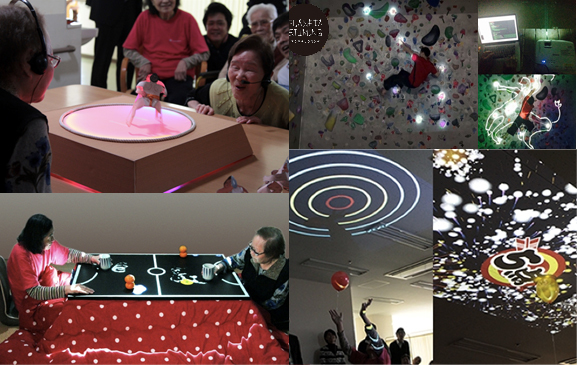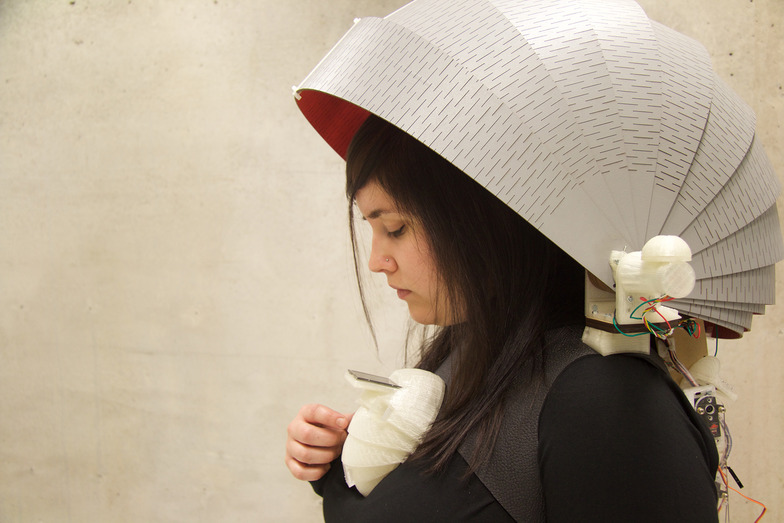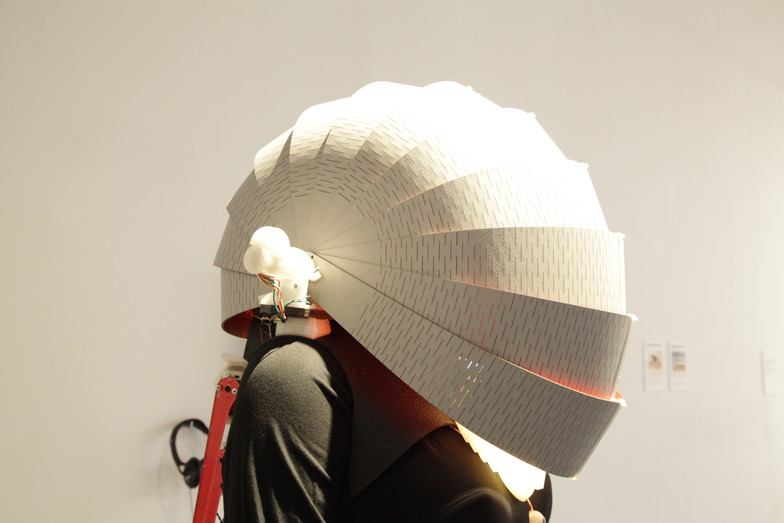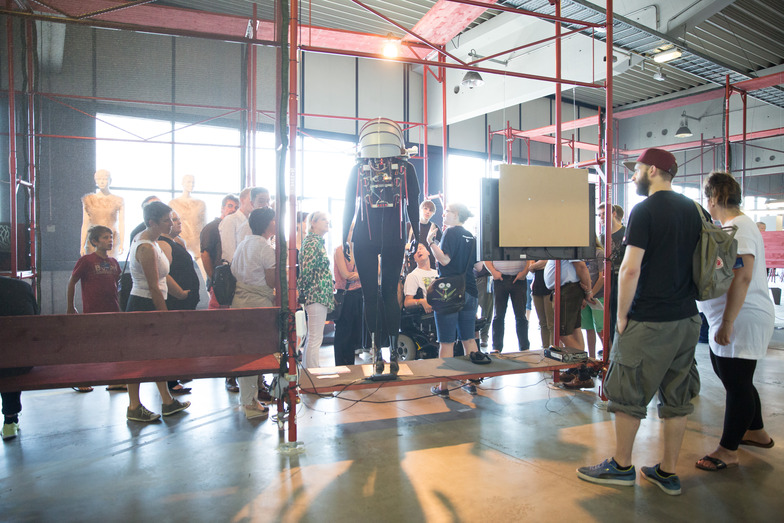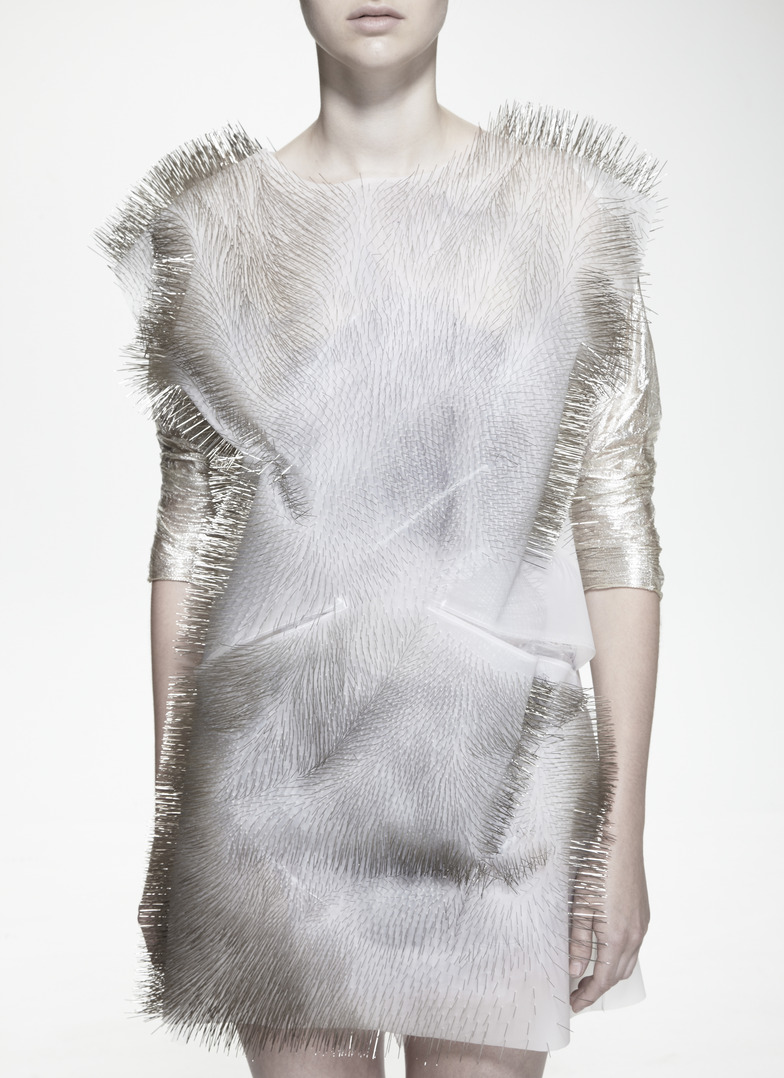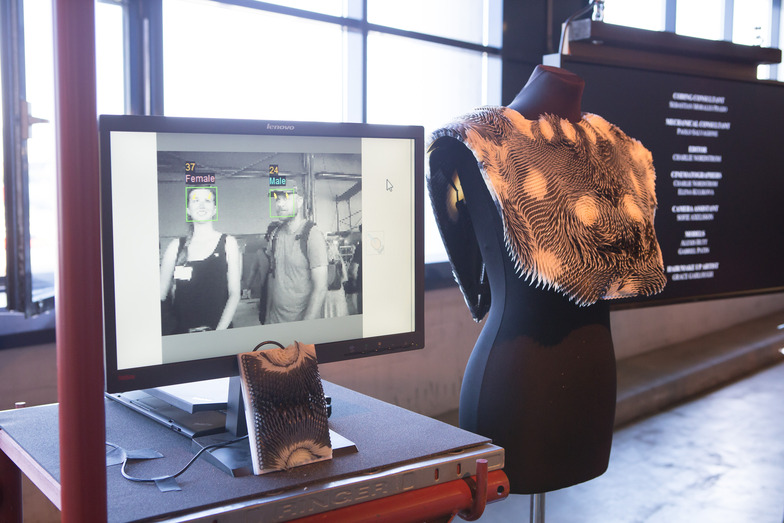This piece was so impactful I couldn't help but stare. It's a smart dress that senses invisible information like the surrounding environment and people's moods and behaviors, then changes shape. For example, when noise is excessive or air is polluted, a mask normally folded at the back of the head unfolds to cover the face. Equipped with various sensors, it analyzes noise, temperature, air pressure, UV levels, and carbon monoxide levels in daily life, recording this data alongside location information. All this information is used via an app to alter the dress's shape, connecting it to the user's mood. There are also plans to create a map plotting how the environment affects one's mood.
The second example we introduce is "Incertitudes".
This is another seemingly mysterious dress covered in countless dressmaker pins. Upon closer inspection, the pins on the dress moved in response to external sounds. It's an interactive dress that moves based on voices or sounds made by the audience. The pin movements are irregular, and the messages they convey are incomprehensible. However, through the overall movement of the pins, the work creates an engagement that somehow feels like having a conversation with the garment. As the name suggests, "uncertainty" is the theme. It's also said to be a metaphor for human relationships.
I felt that by deliberately avoiding clear interaction and opting for vague output, it achieved a strange kind of realism.
The third example I'd like to introduce is "Caress of the Gaze".
What if our clothes could recognize and respond to others' gazes? This work makes that possible. For example, if you stare intently at this device, its spiky hairs begin to move, much like an animal bristling in warning. It's achieved using 3D printing and image recognition technology.
The aim of this work is to become a human "second skin." Our skin reacts to external conditions like temperature and humidity, or internal states like tension and fear, by sweating or getting goosebumps. This piece expresses the idea of skin producing an output in response to a new input axis: the human gaze.
As with previous works, I felt that wearable devices we don, will increasingly become interfaces that reveal social issues. I intend to delve deeper into this point in my concluding summary, based on my observations from these examples.
Future wearables will be "problem-discovery devices."
The reason the works mentioned above caught my attention is that I sensed a new direction in the purpose of wearable devices. I believe the primary goal of wearables, from the past to the present, has been "to provide benefits to the wearer."
VR provides extraordinary experiences. Apple Watch delivers information.
However, if the goal is to provide the wearer with some kind of experience or information, it's said this concept could be superseded by the next idea: "implants." This involves the integration of the body and computer. Contact lenses becoming direct monitors, or using ultrasound on muscles to move the body according to a program.
So, will physically worn devices completely disappear? Not necessarily. The wearables I saw at Ars seem to aim to be "sensors that highlight social issues." Using the earlier examples, they are designed to make clothing an interface between the wearer and society, "highlighting air pollution," "highlighting issues related to gender and personal identity," and then confronting society with these issues.
In other words, I believe the future significance of wearables lies in their role as interfaces that reveal our relationship with society—as "social issue discovery devices."
The Significance of Advertising Agencies Participating in Ars
This year's Cannes Lions PR Grand Prix winner, "The Organic Effect," stood out for its creativity in identifying issues and uncovering facts. To break free from the arena where ideas for solutions to existing problems compete, I believe we need to compete starting with ideas for extracting issues and facts. Ars is littered with such seeds. The future wearables mentioned earlier are precisely one such example. Ars may be a festival that "reveals and poses facts that become questions for society." On the other hand, it could be said that few works delve into solutions. Isn't that where there's room for our domain to match?
While Cannes is where you go to evaluate and acquire solution ideas, Ars is where you go to obtain seeds of novel and unique problem discovery.
By blending these two experiences and insights, we can develop solutions at a higher level.
That may be one reason why we in the advertising industry find value in attending Ars.
Next time, we'll feature a report by Mr. Koyanagi, Art Director of Creative Planning Division 4, on "Art Direction and Technology" as seen through Ars Electronica. This will offer a different perspective from the previous three reports. Stay tuned!

